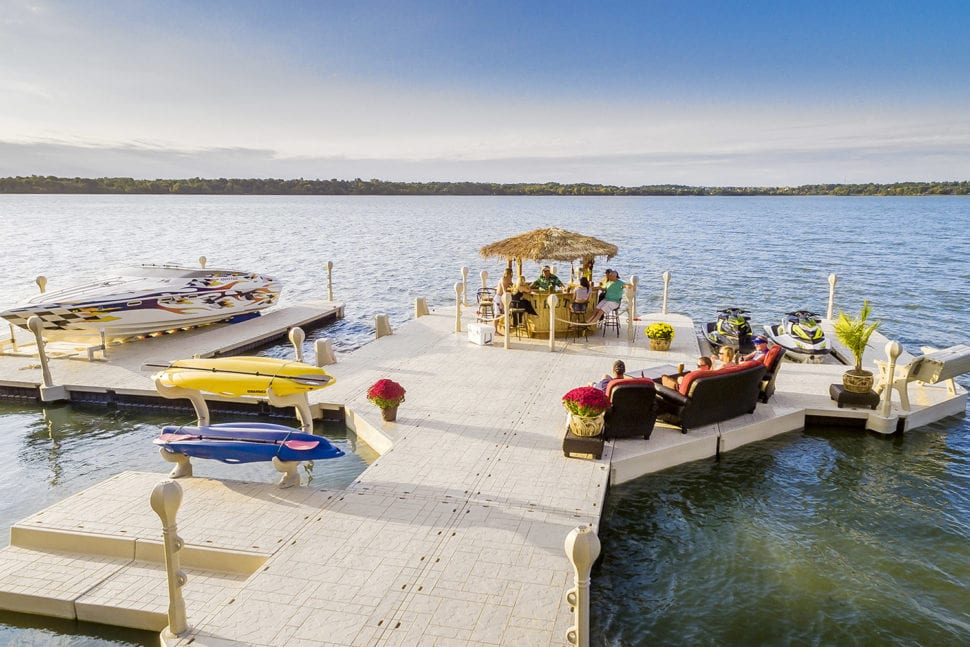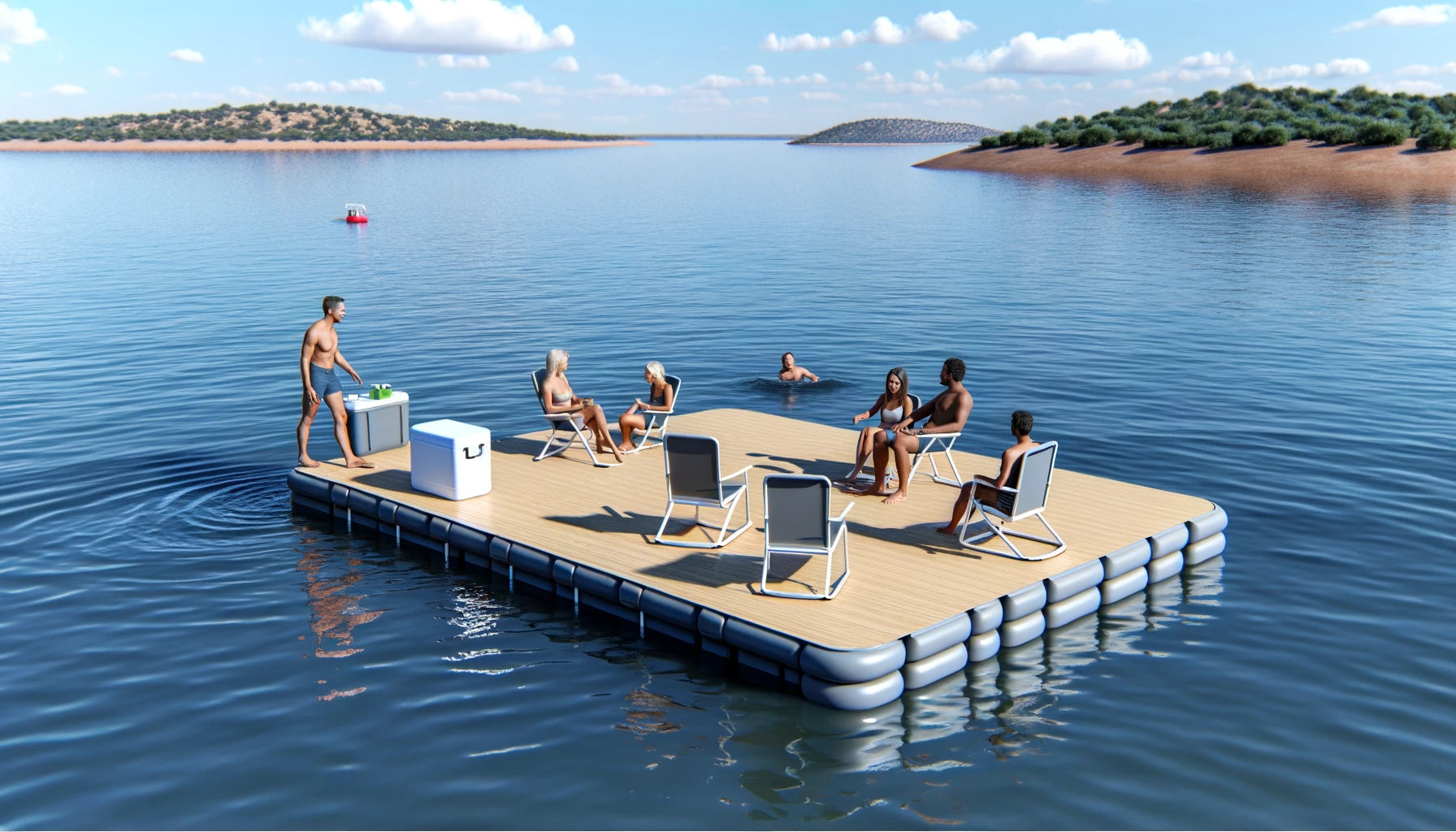Produce the Perfect Docking Option With Floating Docks
Floating docks present a functional remedy for a selection of maritime demands, adapting seamlessly to changing water degrees and varied vessel kinds. Their modular nature permits fast installment and moving, yet the selection of ideal materials and design attributes is important for guaranteeing both functionality and aesthetic charm. As we discover the crucial elements that add to the effectiveness of floating docks, numerous key variables regarding stability and upkeep will certainly emerge, questioning regarding just how to enhance your docking experience. The succeeding discussion will certainly illuminate these vital considerations.

Advantages of Floating Docks
Floating docks deal many benefits that make them an excellent option for numerous maritime applications. Among the main advantages is their adaptability to changing water degrees. Unlike repaired docks, floating docks fluctuate with the trend, ensuring consistent availability for vessels. This function is especially essential in locations prone to considerable tidal variations or seasonal water level changes.
Additionally, floating docks are usually simpler and quicker to install contrasted to standard set frameworks. Their modular design permits uncomplicated setting up and disassembly, assisting in upkeep and relocation when essential. This versatility is particularly useful for temporary applications or in atmospheres where problems may change.
Floating docks also often tend to be extra ecologically pleasant, as they reduce interruption to the seabed and surrounding water communities. Their resilient nature lowers the threat of damages to marine life, advertising a much healthier atmosphere. Furthermore, these docks can be tailored to accommodate various vessel dimensions, guaranteeing that they satisfy certain functional demands - dock company.
Inevitably, the combination of adaptability, ease of installment, and ecological factors to consider makes floating docks an extremely reliable remedy for a vast array of maritime demands.
Selecting the Right Products
Selecting the suitable materials for floating docks is important to guarantee sturdiness, longevity, and stability. The option of products directly influences the dock's efficiency in various ecological conditions, consisting of exposure to water, sunlight, and possible wear from marine web traffic.
Usual materials made use of for floating docks consist of light weight aluminum, timber, and high-density polyethylene (HDPE) Aluminum is lightweight, corrosion-resistant, and needs very little upkeep, making it an outstanding choice for durability. Nonetheless, its preliminary expense can be higher contrasted to other products.
Wood, while cosmetically enticing and offering a standard appearance, can be vulnerable to rot and pest damage if not appropriately treated. Consequently, making use of pressure-treated timber or naturally long lasting species like cedar or redwood can mitigate these issues.
HDPE is a popular selection as a result of its resistance to UV rays and chemicals, along with being eco-friendly. dock company. It is readily available and light-weight in numerous shades, allowing for personalization
Inevitably, the appropriate material option will depend upon certain demands, consisting of budget plan, wanted visual appeals, and ecological considerations. Careful analysis of these variables will result in a resistant and effective floating dock solution.
Style Factors To Consider for Security
When creating floating docks, making certain stability is an essential aspect that can substantially influence their performance and safety and security. Stability in floating dock design is affected by numerous elements, including buoyancy, weight distribution, and the arrangement of components. An optimum buoyancy system must make use of materials that provide adequate lift while lessening weight. This equilibrium makes certain that the dock remains above water, also under varying lots.
Weight circulation is critical; equally distributing tons throughout the dock avoids turning and boosts security. Wider styles can offer increased security, particularly in harsh water conditions, while longer docks may need added supports to prevent sagging.
An additional vital factor to consider is the environmental effect, including wave activity and wind. Including attributes such as sidewalls or skirting can help reduce the results of environmental forces, maintaining security in Look At This damaging conditions. Eventually, a mix of thoughtful design, product choice, and understanding of ecological variables will yield a floating dock that meets both stability and security demands.
Setup Tips and Strategies

Next, secure the necessary permits and stick to neighborhood regulations, which may determine installation techniques and ecological factors to consider. Engage a qualified professional experienced in floating dock installments if needed. Usage premium materials developed for aquatic atmospheres to boost longevity and longevity.
When placing the dock, align it parallel to the shoreline to promote very easy gain access to. Make sure that the anchoring system is robust, utilizing cinder block or helical anchors to maintain the dock against wind and wave activity. It's crucial to make up seasonal water level variations, consisting of possible ice activity in cooler climates.
Throughout the installation, ascertain the dock's floatation and stability before completing the anchoring. Routinely evaluate the installment for any signs of wear or damage. By following these strategies and suggestions, you can achieve a safe and secure, useful, and aesthetically pleasing floating dock installation that satisfies your requirements.
Maintenance and Treatment Standards
Caring and maintaining for floating docks is essential to extending their life-span and guaranteeing safe use. Regular inspections must be conducted to identify any indications of wear, damages, or aquatic development. Seek cracks, loosened installations, or stained locations on the dock's surface, as these issues can jeopardize structural integrity.
Cleaning is why not look here essential. Use a pressure washer to remove algae, barnacles, and debris, which can accumulate in time. For stubborn growth, take into consideration eco-friendly cleaner that will not hurt marine life.
In addition, examine the mooring lines and supports often to guarantee they are complimentary and protected from deterioration. Change any frayed or harmed lines promptly to keep security.
Throughout extreme weather, such as tornados or freezing problems, take precautionary actions. Protect the dock with extra mooring lines and, if possible, remove any detachable elements to stop damage.
Verdict
In final thought, the implementation of floating docks offers a flexible and effective docking solution appropriate for numerous maritime applications. With correct setup and regular maintenance, floating docks can supply trustworthy and efficient docking experiences for a wide array of vessels.
As we check out the vital elements that contribute to the effectiveness of floating docks, several key factors concerning stability and upkeep will arise, raising inquiries concerning exactly how to enhance your docking experience. Unlike repaired docks, floating docks surge and loss with the tide, making certain consistent availability for vessels.When creating floating docks, ensuring stability is a fundamental element that can significantly affect their functionality and security. Stability in floating dock layout is affected by numerous variables, including buoyancy, weight circulation, and the setup of parts. Ultimately, a mix of thoughtful design, material selection, and understanding of environmental elements will straight from the source generate a floating dock that meets both stability and safety requirements.